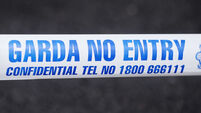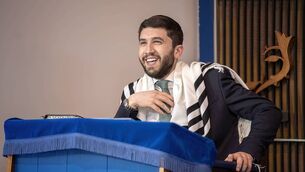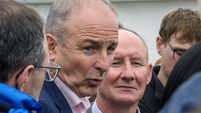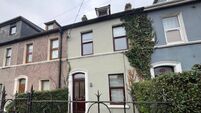New exhibition to celebrate peacekeepers' work
Half a century of Irish peacekeeping in the world’s trouble spots will be marked with a new exhibition in the National Museum.
Exhibits in the UN 50 display will feature among the current Soldiers & Chiefs installation at Collins Barracks.
Ireland joined the United Nations in 1955 and has been involved continuously in peacekeeping duties throughout the world since 1958.
“The UN 50 exhibition examines the role played by these Irish men and women in the cause of world peace over the last 50 years, in particular looking at their service in Congo, Cyprus, Somalia, the Sinai, Lebanon, Liberia and Chad,” said a museum spokeswoman.
Over 800 peacekeepers have lost their lives in UN service, of whom 10% were Irish.
The exhibition, which continues until December, contains interactive displays about Irish peacekeepers and equipment from their tours in Congo and Lebanon.
The first international operation was the UN Observer Group in Lebanon in June, 1958. An armed Irish contingent was later sent to the Congo from 1960 to 1964.
A military parade at McKee Barracks featuring the Army, the Air Corps and Naval Service was held in McKee Barracks in May.
There are currently more than 800 men and women serving overseas on 12 separate missions.
Meanwhile, letters written in the 1920s by former Taoiseach and president Eamon de Valera have been donated to Collins Barracks museum.
The documents are part of a collection of private papers belonging to the family of Easter 1916 rebel Padraig O Caoimh.
In the letters to Sinn Féin official Jenny Wyse Power, then party leader Mr de Valera is demanding control over all party funds but he is turned down.
The collection also contains a list of signatures of Irish prisoners in Richmond Barracks after Easter Week.
The names are written on pages torn from Padraig Pearse’s book of Irish stories, 'An Mhathair', a volume of stories in Irish.
One of the signatures is from Lord Mayor of Cork Terence MacSwiney, who later died on hunger strike in 1920.
This collection has been donated by Mr O Caoimh’s grandson, Patrick O’Byrne who hopes it will encourage other holders of such collections to similarly donate them to the state.
“Mr O’Byrne’s donation augments the National Museum’s extensive collection of historical memorabilia relating to the War of Independence period,” added a museum spokeswoman.













